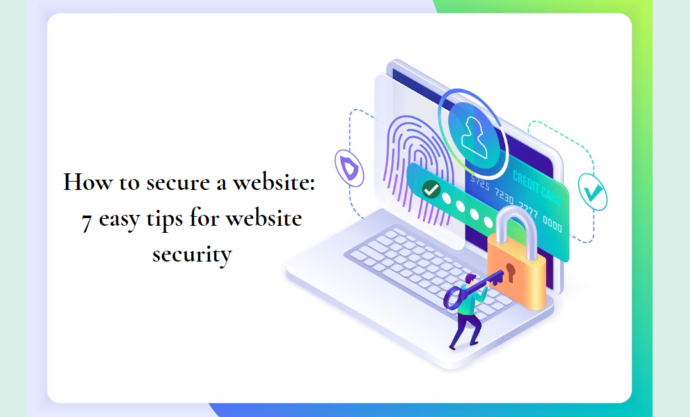- 7 must-do things to secure a website
- What is website security?
- Bonus tips for your WordPress website
- What can go wrong if you ignore a site’s security?
- Case studies: Ignoring proper website security
- How security issues arise
- Conclusion
Knowing how to secure a website isn’t an impossible task.
Some might argue that the easiest solution is to keep it offline altogether, but that’s not always practical or desirable.
When faced with the question of website security, people often turn to the website builder and content management systems (CMS) to determine the best option for robust protection.
However, it’s essential to recognize that regardless of the platform you choose, some level of risk will always be involved.
What complicates matters further is that the responsibility of managing that risk falls on your shoulders. Attempting to tackle it alone can lead to unforeseen issues arising swiftly.
In this article, we aim to address this challenge by sharing valuable tips to secure your website.
The best part is that you don’t need an advanced degree to implement these strategies.
They are straightforward techniques that can be put into action within a single afternoon.
Moreover, they have proven their effectiveness in real-world battles against hackers and malicious bots.
So, without further ado, let’s look into these practical methods and fortify your website’s security!
How to secure a website: 7 essential things you should do
Website security doesn’t come with many guarantees.
There’s no magic solution that can ensure absolute protection against hackers indefinitely.
However, there are strategies you can implement to minimize vulnerabilities and enhance your ability to recover swiftly in case of an attack.
Check out our article and learn more about the security of your WordPress site.
1.)Install an SSL Certificate for website security
If you’re new to website development, you might perceive data encryption as something reserved for large corporations or investigative journalists, like a secret agent’s tool.
However, if you intend to attract traffic from search engines like Google, an SSL certificate installed becomes essential for achieving a respectable ranking.
- SSL stands for Secure Sockets Layer
In fact, even if you simply want to collect email addresses for a newsletter, an SSL certificate is a requirement.
If this sounds overwhelming, remember that there are valid reasons for all using secure sockets layer, because of secrecy and precautions.
In the past, any sensitive information transmitted by your website users would be vulnerable, as it was transmitted in plain text.

If intercepted, this data could be read in its entirety, including passwords, bank details, email addresses, and more.
Here’s where an SSL certificate comes into play—it envelops all this sensitive information with an impenetrable layer of encryption, rendering it unreadable to unauthorized individuals.
Utilizing an SSL certificate is the fundamental step towards establishing a secure website.
Without it, your visitors may encounter a warning message that raises concerns about their safety:

This is why leading website builders such as Wix and Squarespace have made HTTPS the default setting for all websites on their platforms.
Fortunately, obtaining an SSL certificate has become a straightforward process for the rest of us as well.
Today, every hosting provider offers user-friendly security tools that allow you to install an SSL certificate with just a few clicks.
If your hosting provider offers such functionality, don’t hesitate to reach out to them for guidance on the setup process. Rest assured, it’s likely to be a simple procedure.
Get an SSL certificate
As an example, the hosting provider Bluehost offers Let’s Encrypt certificates that are conveniently accessible directly from the control panel.
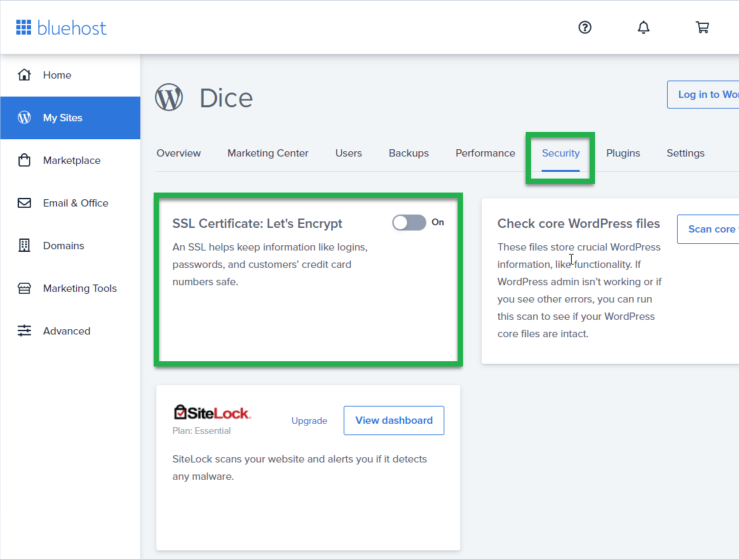
If your host doesn’t offer a simple tool, you can generate a free domain validation certificate from Let’s Encrypt by following their guides.
Once generated, you can install it through cPanel or your host’s custom dashboard.
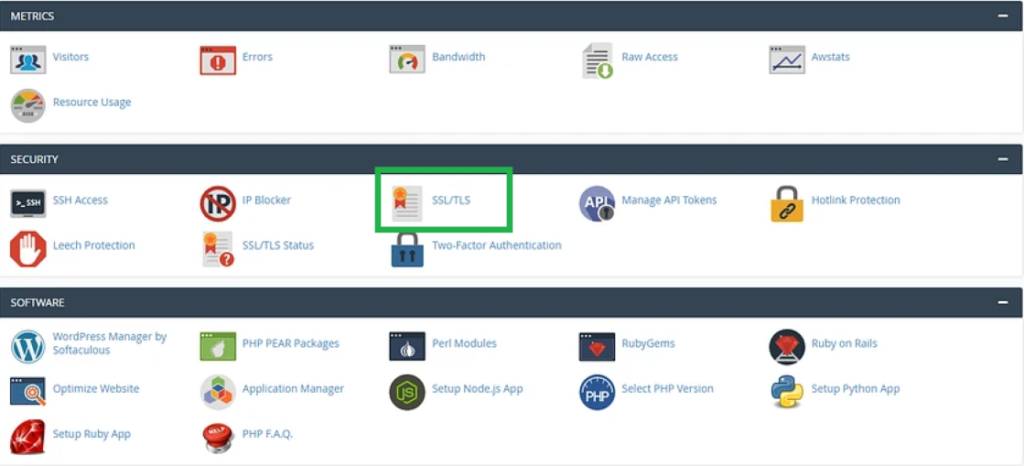
If you want to know which is the best cPanel hosting provider, click here and read our article where we compare the best providers, their prices and how people rate them.
For WordPress users, you can utilize security plugins like Really Simple SSL to effectively configure your website to utilize the installed SSL certificate.

2.) Use multi-level login verification
When it comes to login security, two simple implementations can take you a long way: strong passwords and multi-factor authentication.
Strong login security is built on two layers:
- something you know (a strong password)
- something you have (a code sent to your email, phone, or via call).
To ensure strong passwords, you have the option to use a password manager.
For instance, using 1Password can make a significant difference.
It offers a password and passphrase generator, making it easy to create and regularly change passwords.
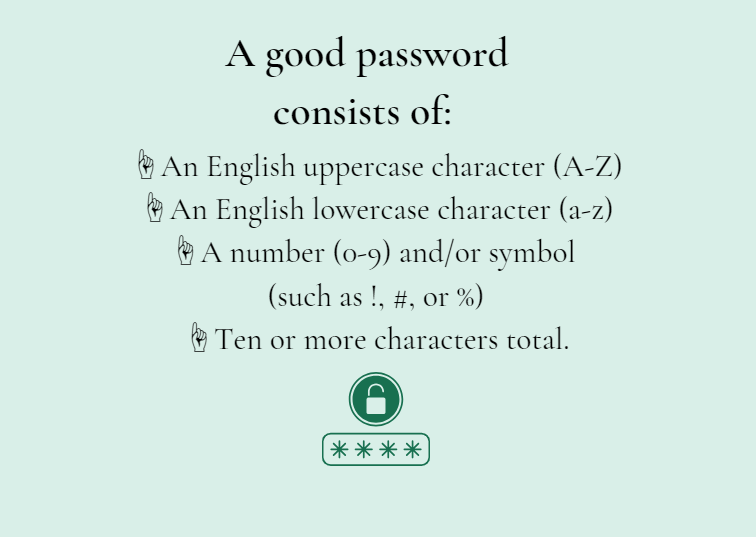
Additionally, with a password database, you can eliminate the hassle of remembering passwords and relying on automatic logins.
To enforce secure password policies for your users, I suggest using the Password Policy Manager for WordPress on WordPress sites.
In addition to strong passwords, set up multi-factor authentication login credentials.
This means that users will need to enter a code, typically sent to a device, whenever they want to log in to your website. One option is to install security plugins.
Google Authenticator and Authy are both user-friendly options for setting up multi-factor authentication on most website builders.
For example, in Squarespace, you can find the option in the Settings.
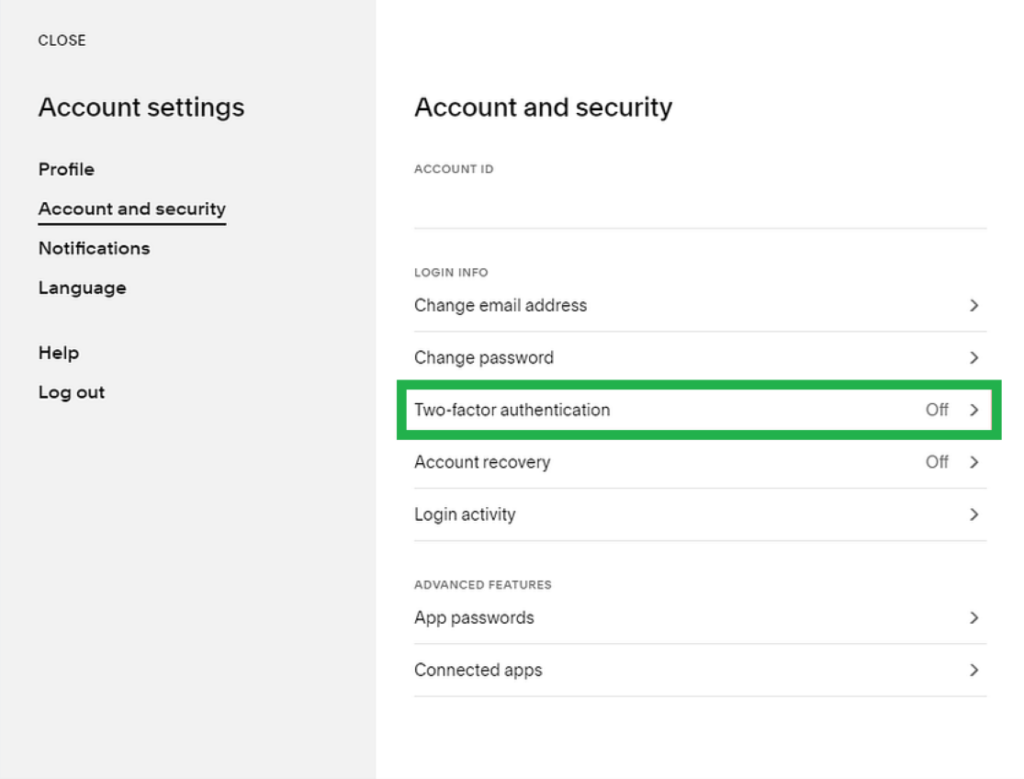
For WordPress users, I can recommend using the Wordfence plugin if you want to increase your site’s security. Alternatively, you can consider using the miniOrange’s Google Authenticator plugin.
If you have built your website from scratch, you can integrate Google Authenticator with your website using Google’s Identity Platform.
This integration allows you to leverage the authentication capabilities provided by Google Authenticator for an added layer of security.
3.) Regular backups are important
One simple yet crucial aspect of the question: “How to secure a website?” is creating a backup schedule.
Although backups may not scare off hackers, they serve as proactive security measures and provide a safe haven for recovery during crises.
Popular website builders offer various backup approaches:
- Wix website builder provides automatic backups of your site weekly.
- Shopify offers the popular Rewind app, among other backup apps.
- Squarespace offers limited backup options, such as duplicating a site or exporting the XML file.
- WordPress users can benefit from numerous plugins designed specifically for secure backups.
Check out our article about the cheapest website builders you can get started with.
For WordPress users, I personally recommend and utilize UpdraftPlus.
With its free version, you can easily back up your website directly to the cloud, including platforms like Google Drive, Dropbox, and Amazon S3, without any limitations.
In addition, UpdraftPlus can assist in restoring your website in times of crisis, ensuring a smoother recovery process.

4.) Keep your software up-to-date
Let me be honest with you; I’m a big fan of user-friendly platforms like WordPress. The abundance of themes and plugins makes everything so convenient.
Need to showcase photographs on your website?
There are countless plugins designed specifically for that purpose.
And it’s not just WordPress; platforms like Wix and Shopify have their own arsenal of apps that allow you to accomplish a great deal without writing a single line of code.
It sounds fantastic, doesn’t it? Well, kind of.
However, these tools can add security risks to your website.
Just one poorly coded third-party product can significantly increase your website’s vulnerability to attacks.
Moreover, if you neglect to update regularly, you’re leaving a door wide open for potential vulnerabilities.
But don’t worry, there are steps you can take to minimize these security risks:
- Remove any programs or plugins that you don’t use.
- Keep your used programs, plugins, and themes up to date by installing the latest updates.
- Stick to programs, plugins, and themes developed by reputable developers who have a proven track record of maintaining their products.
- Conduct thorough research on any networks you plan to integrate with, ensuring they meet security standards.
If you’re using WordPress as your content management system, you’ll receive notifications within the dashboard whenever you need the software up-to-date, as well as for your themes and plugins.
You can also take advantage of the auto-update feature of WordPress core software, which simplifies the process and covers all the aforementioned components.
For the utmost security, consider exploring a hosting provider that offers managed hosting plans.
Opting for such a plan not only provides enhanced security measures but also assigns the responsibility of handling updates for your entire WordPress website to a dedicated team.
If you’re ready to take the leap, you can learn more about website hosting at any time.
5.) Protect your website with a Web Application Firewall (WAF)
If you’re looking to secure your website with the strength of a warrior, then a web application firewall (WAF) is the way to go.
Firewalls have been a familiar concept on the internet for the past 25 years.
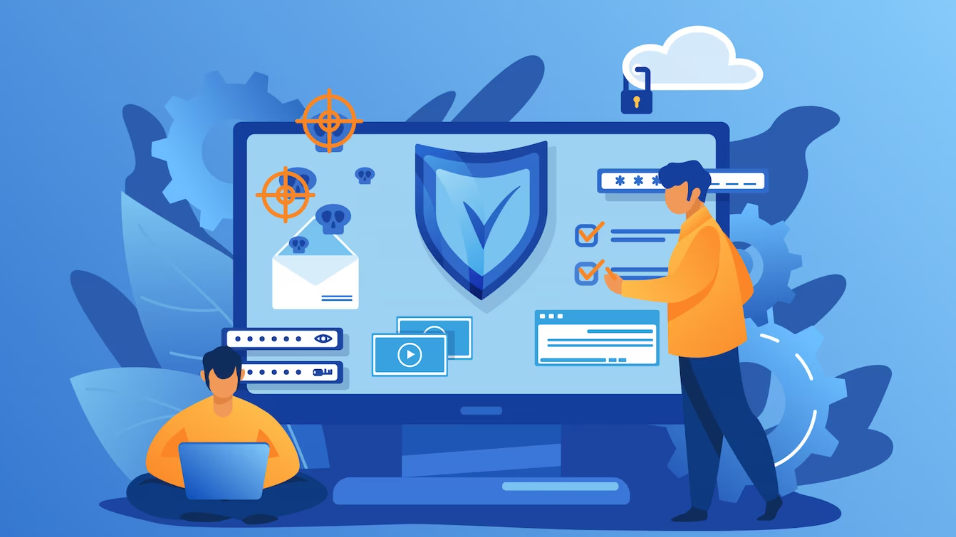
A web application firewall functions similarly to the firewall on your computer, utilizing pre-defined rules to detect and block attacks.
This makes them highly effective in combating common threats such as cross-site scripting (XSS), cross-site scripting, SQL injections, and more.
Despite the ever-evolving threat landscape, a WAF remains an indispensable tool.
One notable advantage is that most modern WAFs can swiftly adapt and deploy rules to address newly discovered vulnerabilities.
As the first line of defense, WAFs are available in three primary forms:
- Network-based, backed by a hardware firewall: This type of firewall, provided by top-tier hosts like Kinsta and website builders such as Squarespace, offers the highest level of protection.
- Host-based: This encompasses WAFs integrated directly into the application itself, often through a plugin or app.
- Cloud-based: The most popular and user-friendly option, allowing for easy integration and management.
For WordPress users, once again, Wordfence emerges as a highly recommended solution, offering comprehensive security features, including a web application firewall.
By implementing a reliable WAF, you strengthen your website’s defense against various malicious activities, bolstering its security posture and safeguarding sensitive data.
6.) Learn to be a good site administrator
As a website administrator, there are several important aspects to manage, and staying on top of them can greatly enhance the security of your website.
Key Areas web server admins should look out for:
- User roles: It’s crucial to keep track of user roles to ensure proper access control. By assigning appropriate roles to users based on their responsibilities, you can limit access to sensitive data and actions. Avoid granting excessive privileges that could introduce vulnerabilities.
- Monitoring user activity and removing inactive users: To safeguard against malicious activity, it’s essential to monitor and track the behavior of your users. Utilizing security plugins like WP Activity Log can help you keep a record of user actions and identify any suspicious or unauthorized activities.
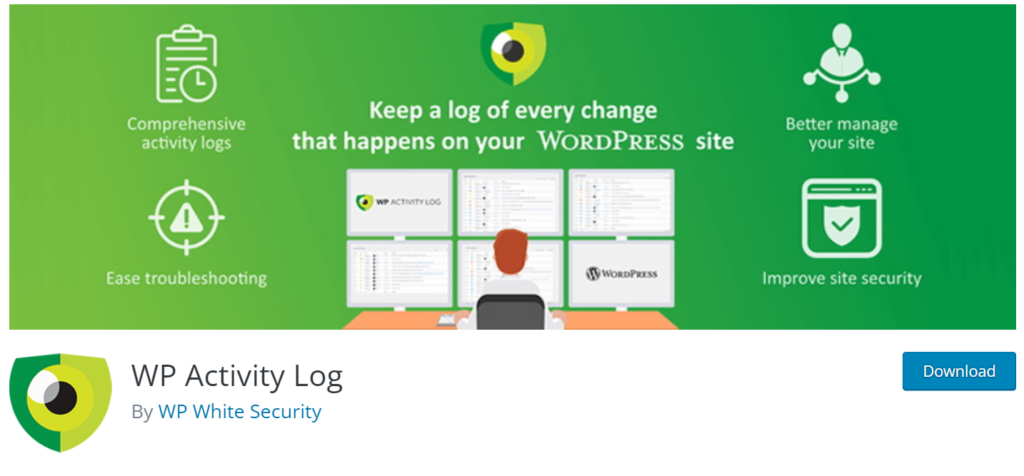
- Moderate comments manually: Avoid automatic approvals and review comments manually before they are published. This allows you to filter out any potentially harmful or inappropriate content.
- Reject comments with links or code: Although less common nowadays, it’s still prudent to disallow comments that contain links or code. This helps prevent the insertion of malicious code within the comment section.
- Restrict file types for uploads: Whether it’s in comments or forms, restrict the types of files that can be uploaded. By specifying only permitted file types, you reduce the risk of malicious files being uploaded to your website.
- Implement scanning and verification for uploads: Use a trusted security solution like Sucuri to scan and verify any uploaded files for potential threats. Sucuri offers robust scanning capabilities to detect and mitigate security risks effectively.

7.) Always be aware
If you’ve implemented the solutions mentioned earlier, you’ve already done a lot to make your website less vulnerable to attacks.
But if you want to keep it that way, there are a couple more things you should do.
First, it’s important to regularly scan your website and any external content you publish, like ads.
This helps you detect any viruses, malware, or malicious code that could be affecting your website. One popular tool you can use for this is Sucuri SiteCheck, and the best part is, it’s free!

For critical websites, it’s also a good idea to conduct a security audit on a regular basis.
A security audit involves two steps:
1.) Use a tool like the Pentest Tools website scanner to check the size of your attack surface.
It looks for vulnerabilities in your network, identifies any sensitive pages that search engines may have indexed, and evaluates the strength of your SSL connection. It’s like having a security expert test your website.
2.) Perform vulnerability assessments using a checklist of common security weaknesses.
This includes checking for inactive plugins, themes, or other third-party products, making sure all your tools are up to date, removing inactive users, and reviewing the access privileges of users who have special permissions like FTP or SSH access.
These measures might be a bit excessive if you have a simple blog for fun, but they’re essential for maintaining a secure environment on important websites.
By staying vigilant and following these steps, you can prevent potential security issues and keep your website safe.
What is website security?
In today’s digital landscape, where threats lurk around every corner, safeguarding the transmission of data between your website and users’ devices is of utmost importance.
That’s where Hypertext Transfer Protocol Secure (HTTPS) comes into play, denoted by that little “S” in your browser’s URL bar.
While acronyms can be overwhelming, this “S” represents security and is absolutely essential in our interconnected world.
The saying goes: “If it can go online, it can be hacked.”
Security is no longer a mere courtesy or a convenience feature—it has become an expectation.
It serves a dual purpose:
- protecting your data from unauthorized access, manipulation, theft, and ransom
- ensuring the security of your customers’ personal data transmissions.
But who bears the responsibility for this security?
The answer is simple—both website owners and internet users need to be proactive in the fight against cyber threats.
It’s not a one-sided responsibility; it requires collaboration. Understandably, not everyone knows how to tackle this task on their own.
Luckily, there are applications available that simplify the process, making it accessible to all with just a few clicks. Some situations may require additional expertise, but solutions are available.
Whether you have a one-page website, a business website, multiple pages, utilize an app, or even an intranet, the nature of security remains unchanged—it is essential.
It should be prioritized regardless of the specific context. So, embrace the power of HTTPS and ensure the safety of your data, your customers, and the integrity of your online presence.
Bonus tips for website security
- Establish a safelist and blocklist to control access to the admin page.
- Choose a reputable and trusted WordPress theme.
- Remove any unused WordPress themes and plugins.
- Enhance security with two-factor authentication.
- Restrict the number of failed login attempts.
- Change the login page URL for your WordPress site.
- Automatically log out idle users to maintain security.
- Keep a close eye on user activity and monitor for any suspicious behavior.
- Conduct frequent malware scans to ensure your site remains clean.
- Disable the PHP error reporting feature to protect sensitive information.
- Consider migrating to a more secure web host.
- Disable file editing within WordPress to prevent unauthorized changes.
- Utilize .htaccess to disable PHP file execution and safeguard the wp-config.php file.
- Change the default WordPress database prefix to enhance security.
- Disable the XML-RPC feature to mitigate potential security vulnerabilities.
- Hide your WordPress version to avoid providing information to potential attackers.
- Block hotlinking from other websites to prevent unauthorized usage of your site’s resources.
- Manage file and folder permissions to restrict access and protect your site’s data.
What can go wrong if you don’t care to secure a website?
Neglecting website security best practices can lead to various consequences:
- Data Breaches: Unauthorized access to sensitive information, resulting in identity theft and reputational damage.
- Malware Infections: Compromised functionality, unauthorized actions, and damage to your website’s reputation.
- Defacement and Loss of Control: Hackers altering your website’s appearance, deleting content, or taking administrative control.
- Downtime and Revenue Loss: Frequent disruptions, inconvenience to visitors, and potential revenue loss.
- SEO Penalties and Ranking Drops: Lower search rankings and decreased organic traffic.
- Legal Compliance Issues: Potential legal consequences and financial penalties.
- Customer Loss and Reputation Damage: Loss of trust, negative publicity, and customer attrition.
Why do you need to secure your website? – Case studies
1.) Equifax: 143 million individuals’ data exposed
In 2017, Equifax, one of the largest credit reporting agencies, suffered a massive data breach that affected approximately 143 million people.
The breach exposed sensitive data, including:
- Social Security numbers,
- birth dates, addresses,
- driver’s license numbers
The incident not only led to financial losses but also caused significant reputational damage to Equifax.
2.) Yahoo: 3 billion accounts compromised
Yahoo experienced multiple data breaches between 2013 and 2014, ultimately affecting all 3 billion user accounts.
The breaches revealed personal information such as:
- names,
- email addresses,
- phone numbers,
- hashed passwords
The incident severely impacted Yahoo’s reputation and played a role in the devaluation of the company during its acquisition by Verizon.
3.) Colonial Pipeline
Disruption of critical infrastructure In 2021, Colonial Pipeline, a major fuel pipeline operator in the United States, fell victim to a ransomware attack.
The attack led to the shutdown of the pipeline, causing fuel shortages and significant disruptions in the country’s East Coast.
The incident highlighted the vulnerability of critical infrastructure to cyber threats and the potential impact on essential services.
4.) NotPetya
Global malware attack NotPetya, a destructive malware disguised as ransomware, spread globally in 2017, affecting numerous organizations.
It targeted computers through a compromised software update and caused widespread disruptions, including financial losses and operational shutdowns.
NotPetya demonstrated the potential for malware to spread rapidly and inflict severe damage on a global scale.
How websites usually get hacked
While there is no definitive outcome when a business website gets hacked, there are common signs and patterns that indicate a breach.
If your site falls victim to hacking, you will undoubtedly notice something is seriously wrong.
Here are some typical ways how a website gets hacked:
- Ransomware: Hackers will threaten to expose your data or block access to your site unless a ransom is paid.
- Gibberish hack: Numerous automatically generated pages filled with meaningless keywords aim to manipulate search rankings. Clicking on these pages may redirect users to suspicious websites.
- Cloaked keywords hack: Similar to the gibberish hack, but more sophisticated. The hacked pages may appear identical to your site’s pages, with only the written content altered.
- Japanese keywords hack: Random pages in Japanese filled with affiliate links to stores selling counterfeit products.
- Malicious code/viruses: Inserting malicious code or viruses into your site can cause it to go down or become inaccessible. This can also affect your hardware.
- Denial of Service (DoS): Hackers employ bots to overwhelm your website with excessive requests, leading to web server crashes.
- Phishing: Scammers impersonate your business website, using your branding, to deceive your clients and obtain personal information.
If you notice any of these signs, it is crucial to take immediate action to mitigate the damage and protect your website’s integrity.
Keep your website secure and safe
If you’re responsible for the security of a website, it’s not just about protecting your own data but also the data of your visitors, customers, and colleagues. However, there’s no need to feel overwhelmed.
In the past, ensuring a secure site may have seemed daunting, but nowadays, you don’t require a large budget or extensive coding skills to achieve it.
With our seven-step risk minimization approach, you already have the knowledge to effectively secure your website:
- Install an SSL certificate for secure data transfer.
- Implement multi-level login security measures.
- Maintain a regular backup schedule to ensure data recovery.
- Keep all software, including themes and plugins, up-to-date.
- Utilize a web application firewall (WAF) for added protection.
- Be a vigilant site administrator, actively monitoring for any security vulnerabilities or suspicious activity.
- Stay informed and updated on the latest security best practices.
By following these steps, you can significantly enhance the security of your website and create a safer experience for your users.
Remember, maintaining a secure website doesn’t have to be complicated or intimidating.
Start implementing these strategies today and enjoy the peace of mind that comes with a well-protected online presence.
Frequently Asked Questions
To secure an insecure website:
1. Update all software and plugins to their latest versions.
2. Install an SSL certificate to enable HTTPS encryption.
3. Use strong and unique passwords for all accounts.
4. Remove any unnecessary or outdated plugins and themes.
5. Regularly backup your website’s data.
6. Implement a web application firewall (WAF) for added protection.
7. Monitor your website for suspicious activity and apply security patches promptly.
8. Educate yourself on best security practices and stay informed about emerging threats.
No, it is not okay for a website to be insecure.
Insecurity exposes the website and its users to various risks, including data breaches, unauthorized access, and malware attacks.
It is crucial to prioritize security to protect sensitive data, maintain user trust, and comply with data protection regulations.
Implementing security measures such as SSL certificates, regular updates, strong passwords, and security monitoring is essential to ensure the safety and integrity of a website.
HTTP does not encrypt data, making it insecure. HTTPS encrypts data for secure transmission. Use HTTPS for better security.
